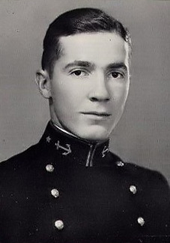Now you're making me nervous. I guess you've seen it all, no wonder you're retired.(heh)
It was definitely a different time, but we felt that we had a mission and it made all those long hours worthwhile.
Last statistics I heard (in the mid 1980s) indicated that only two-thirds of the boomer force would launch on order. Some boats would have the inevitable mechanical/electronic difficulties, but a surprising number of that remaining third would find a reason not to launch even if everything was working perfectly. The only perceived solution was to try to put an extra missile or two on every target, which is already pretty complicated on a multi-missile target after the first missile does its job.
Spouse says these types of stories should be my next book. The problem is getting access to the logs and the other hard evidence to corroborate what would otherwise be interpreted as libel along with a huge felonious violation of national security regulations. I wrote some of the logs & point papers but I no longer have the security clearance to read my own work, and I don't think a FOIA request is gonna cut it.
But you can read most of it in
"Blind Man's Bluff" and
John Craven's book. I think he's still alive (he'd be in his mid-80s) and when he wrote the book he no longer cared very much about security restrictions.
I missed that. When my boat went on patrol, the missiles were aimed at real estate in the USSR. If one cared enough, one could figure out the destinations from the targeting tapes. I believe that in those days, if the whole crew had cooperated, we could have launched them on our own, although the odds of doing that were virtually nonexistent.
I think it happened sometime in the early 1990s, with the submariners kicking & screaming and dragging their heels on the ground. I remember that before then we had a target package loaded as soon as we went alert and the only other thing we needed was a properly formatted & authenticated message.
We used to have officer training on exactly what had to happen to be able to launch the missiles, and the number of people depended on how many you had to get rid of. (It was more than just the CO with his key and the Weapons Officer with his, although you could bypass a few circuits with two alligator clips and 12" of wire.) Of course after the first missile left the tube you had to have a pretty persuasive story for the rest of the crew to let you keep going.
The real weak spot in the system turned out to be right in COMSUBPAC's command center. The watch officer (a shore-duty lieutenant with about four years of service) and the quartermaster (an E-5 on his first shore duty, maybe on his first enlistment) had everything they needed to put out a launch order to the entire fleet whether NCA thought it was a good idea or not. That caused a little heartburn when a newly-qualifying watch officer asked a few questions and somebody put the pieces together. Presumably COMSUBLANT had the same issue, although I doubt they wanted to compare stories...


